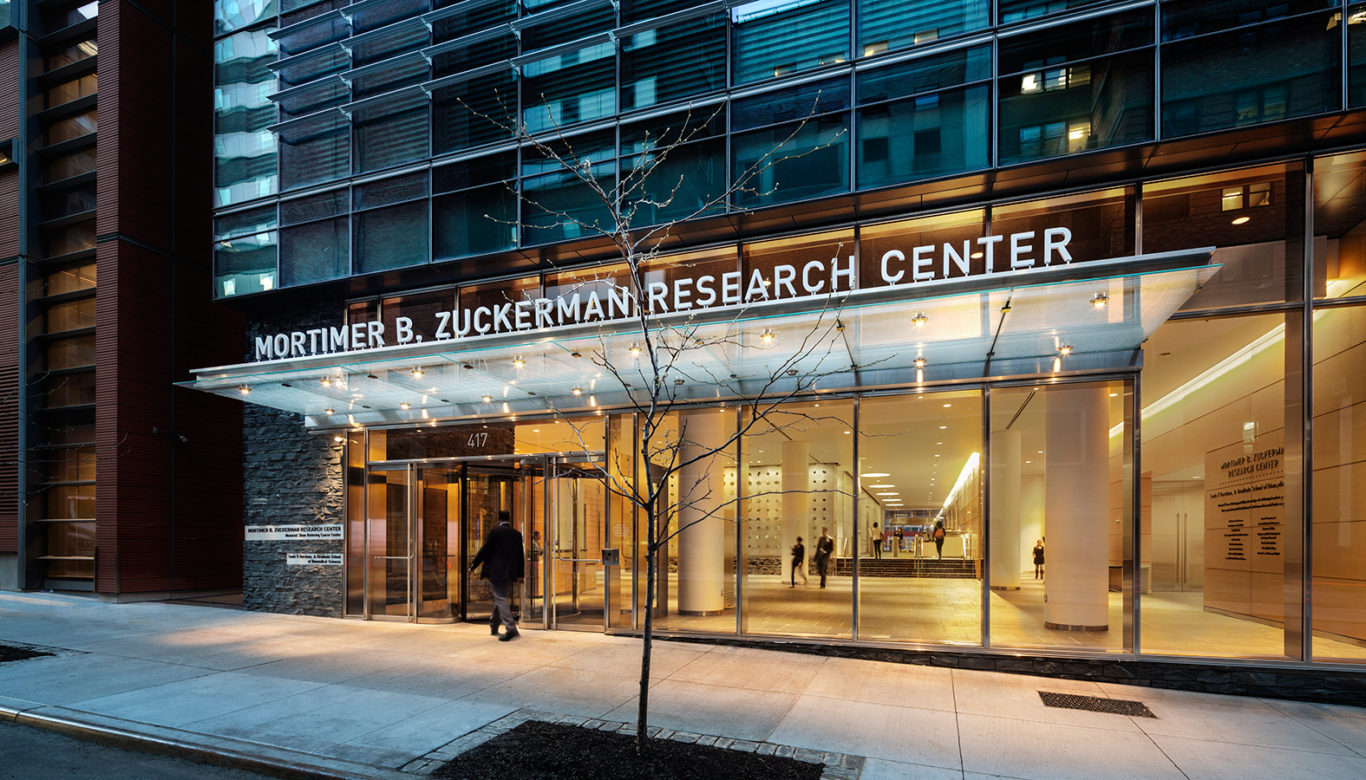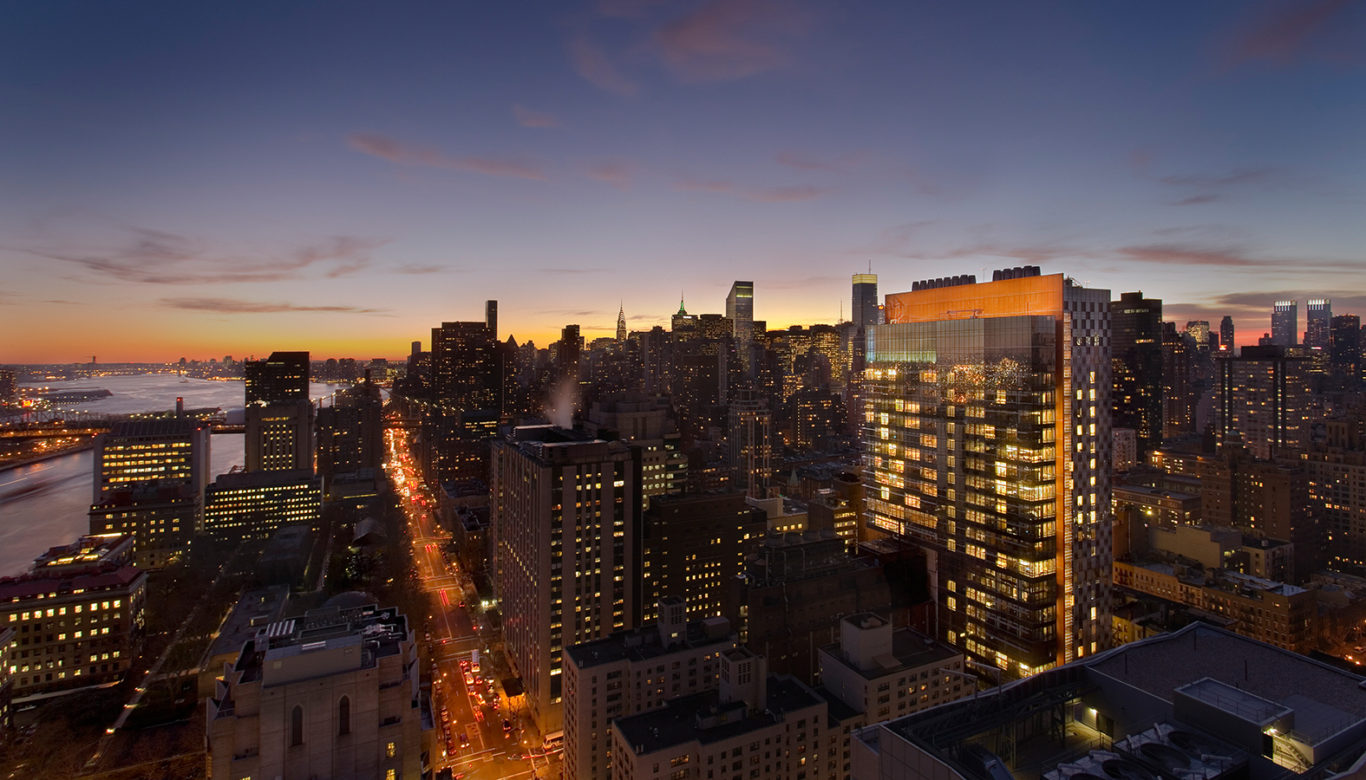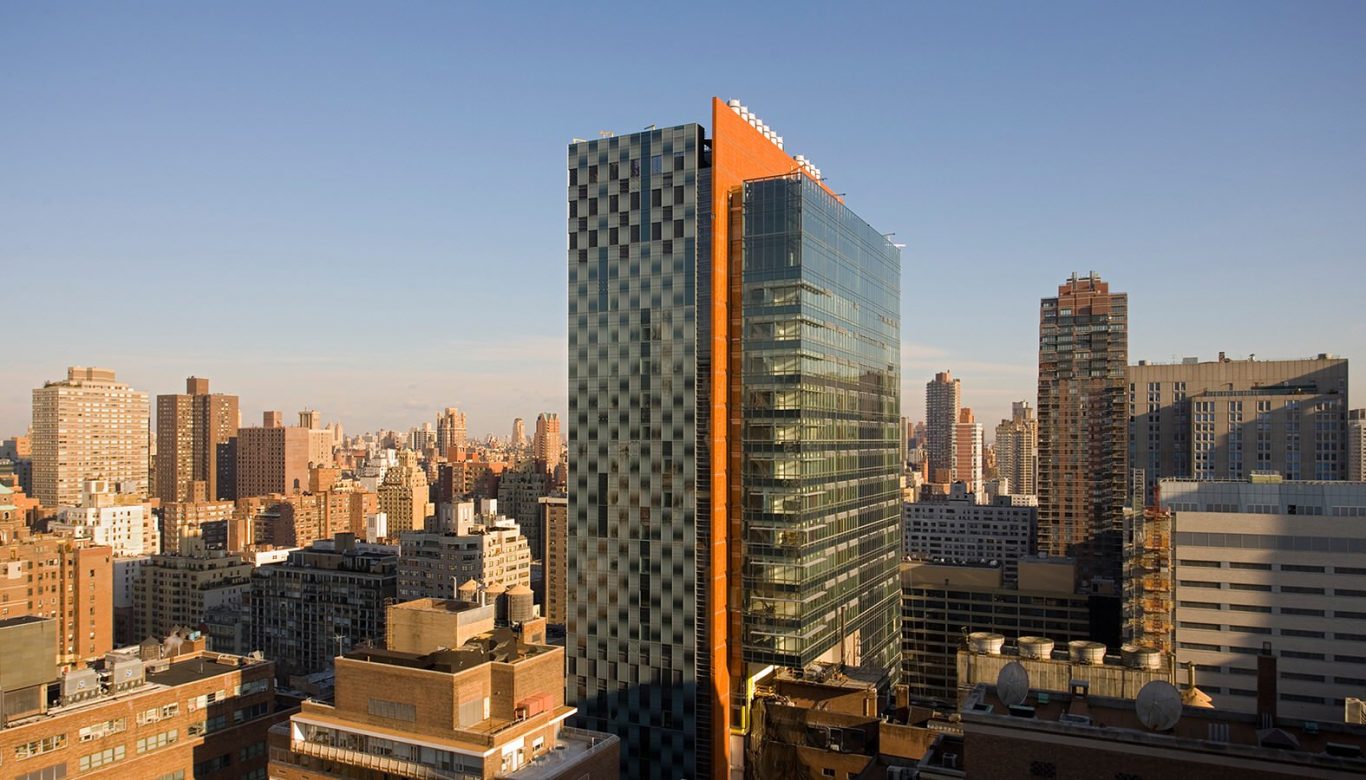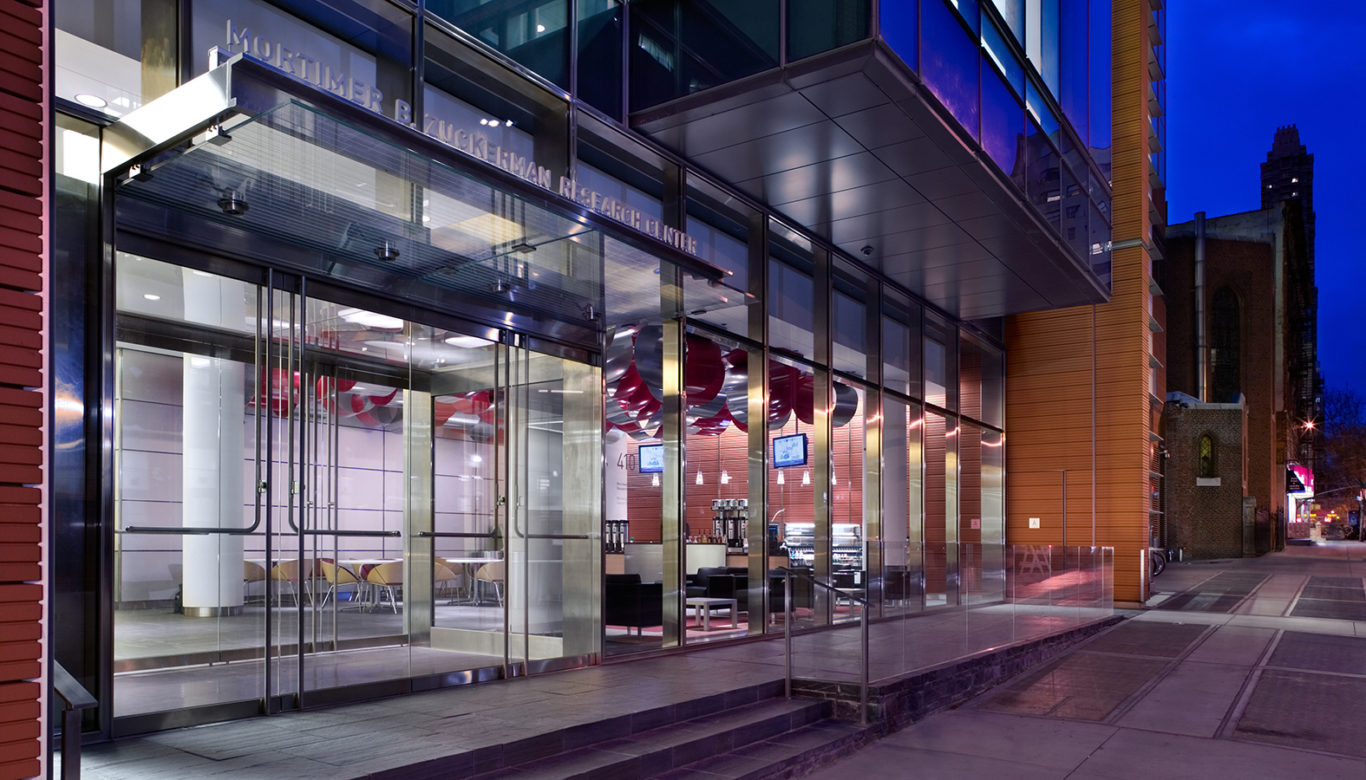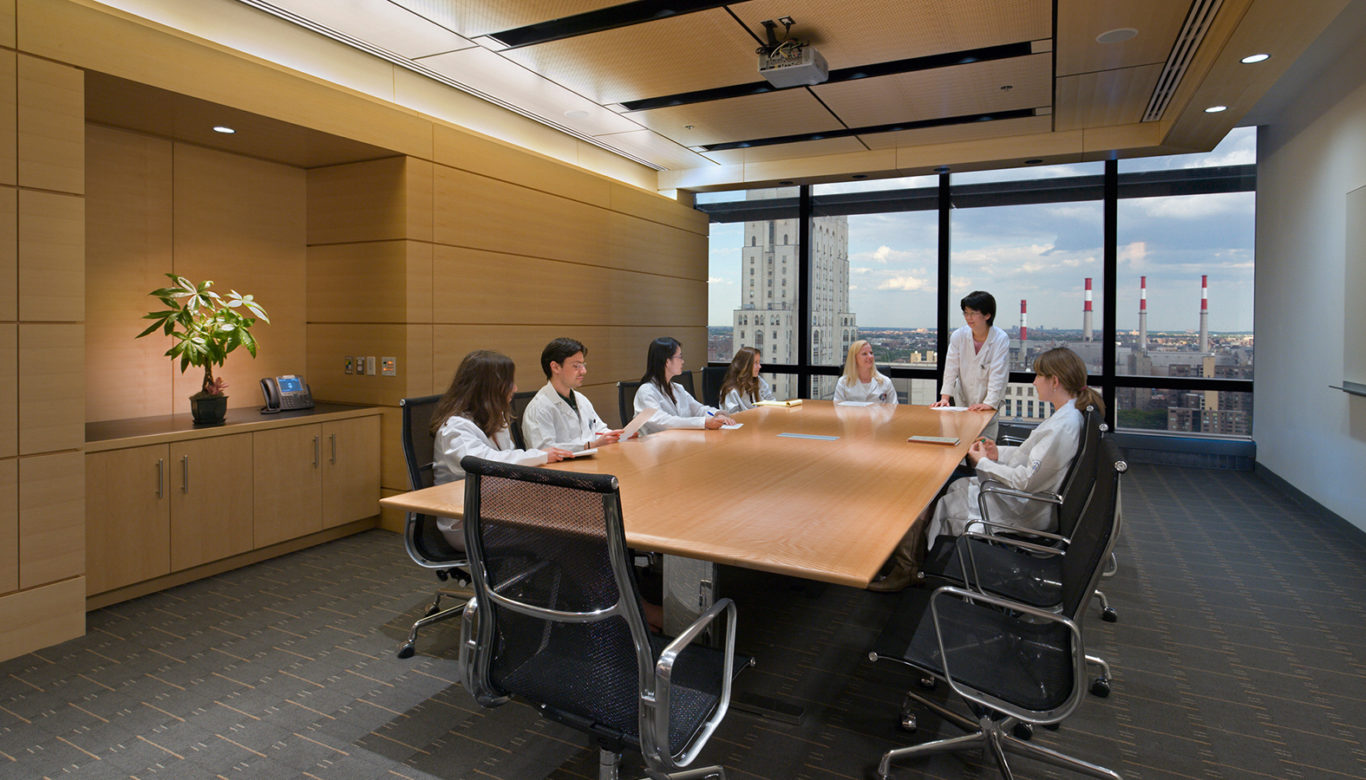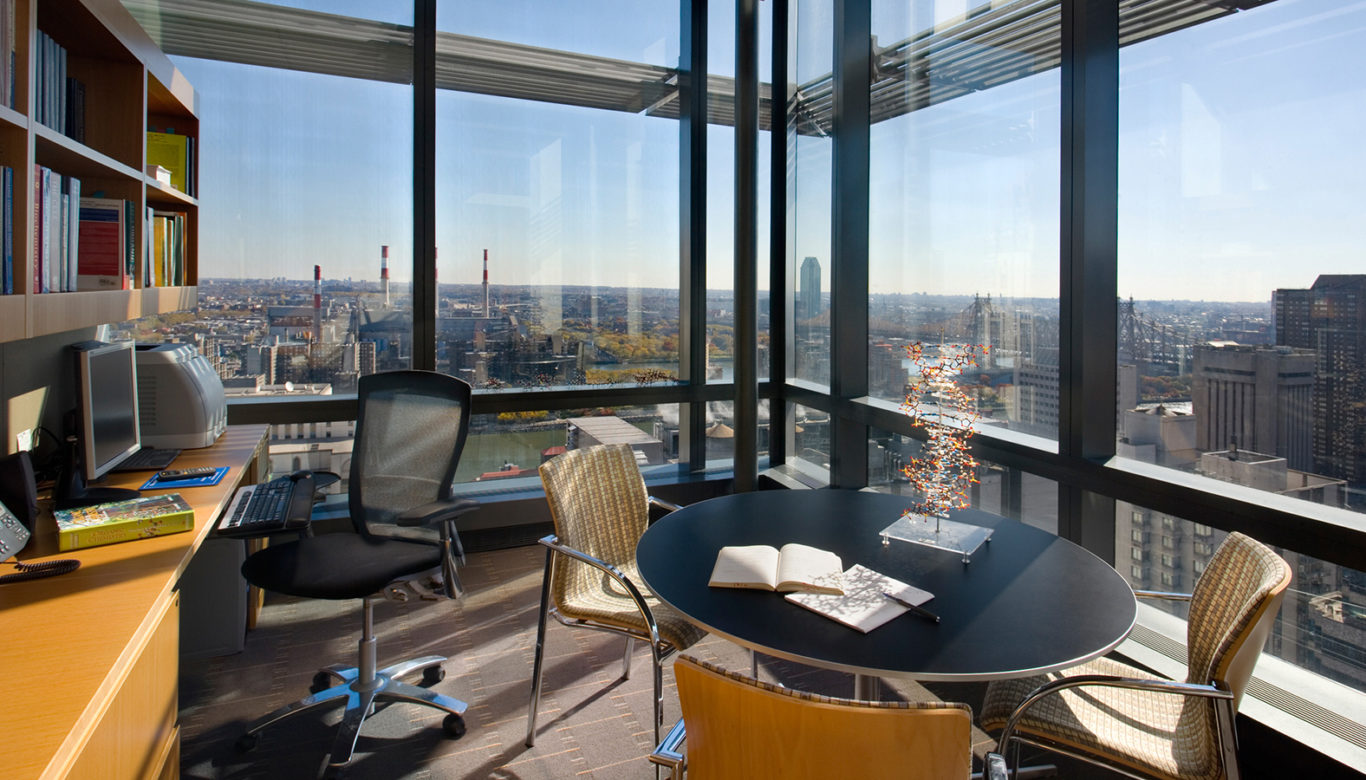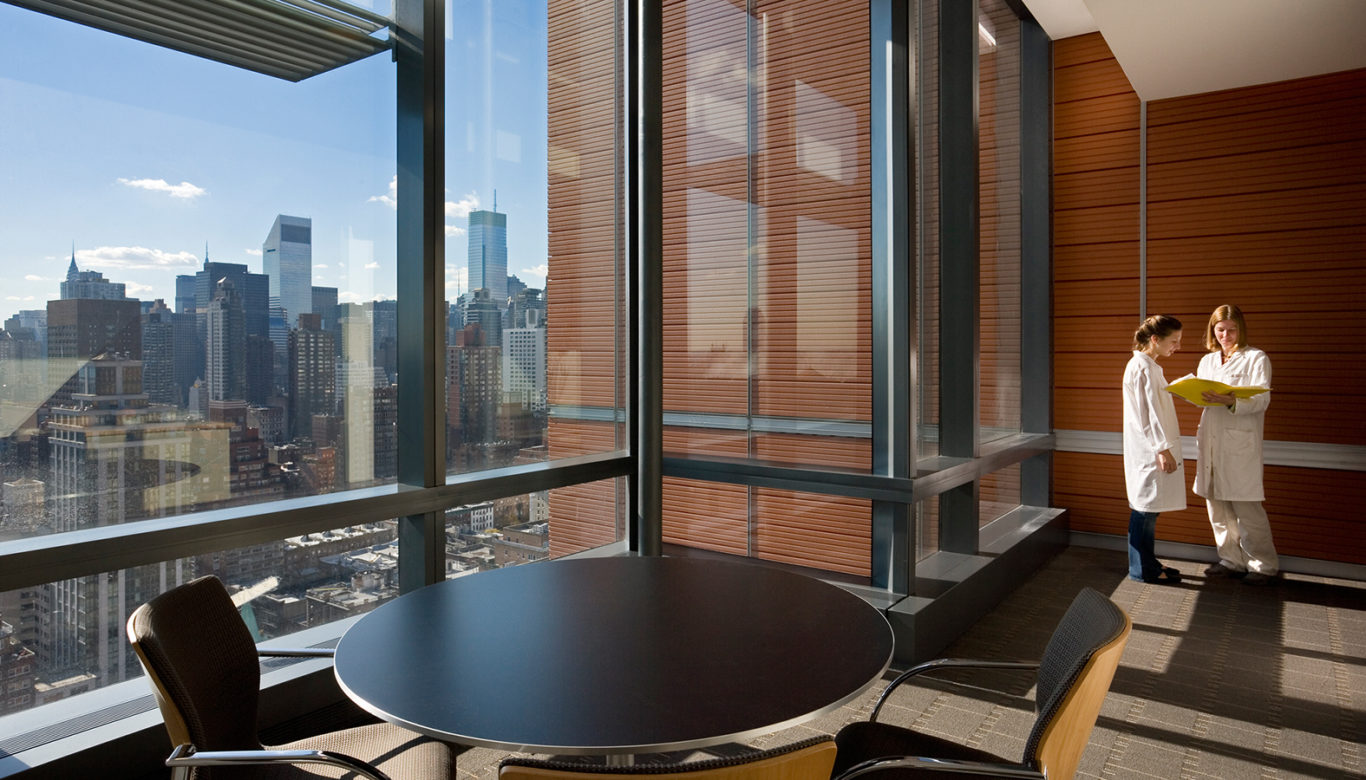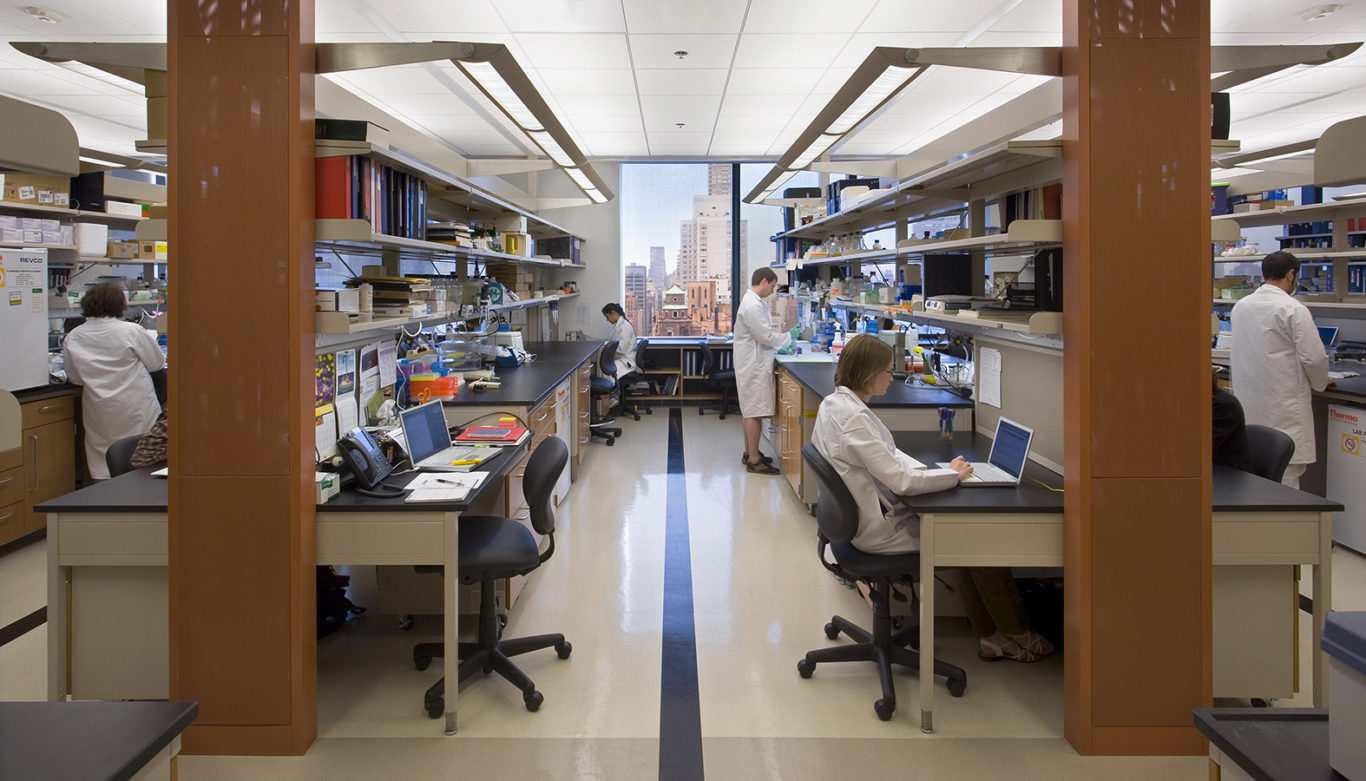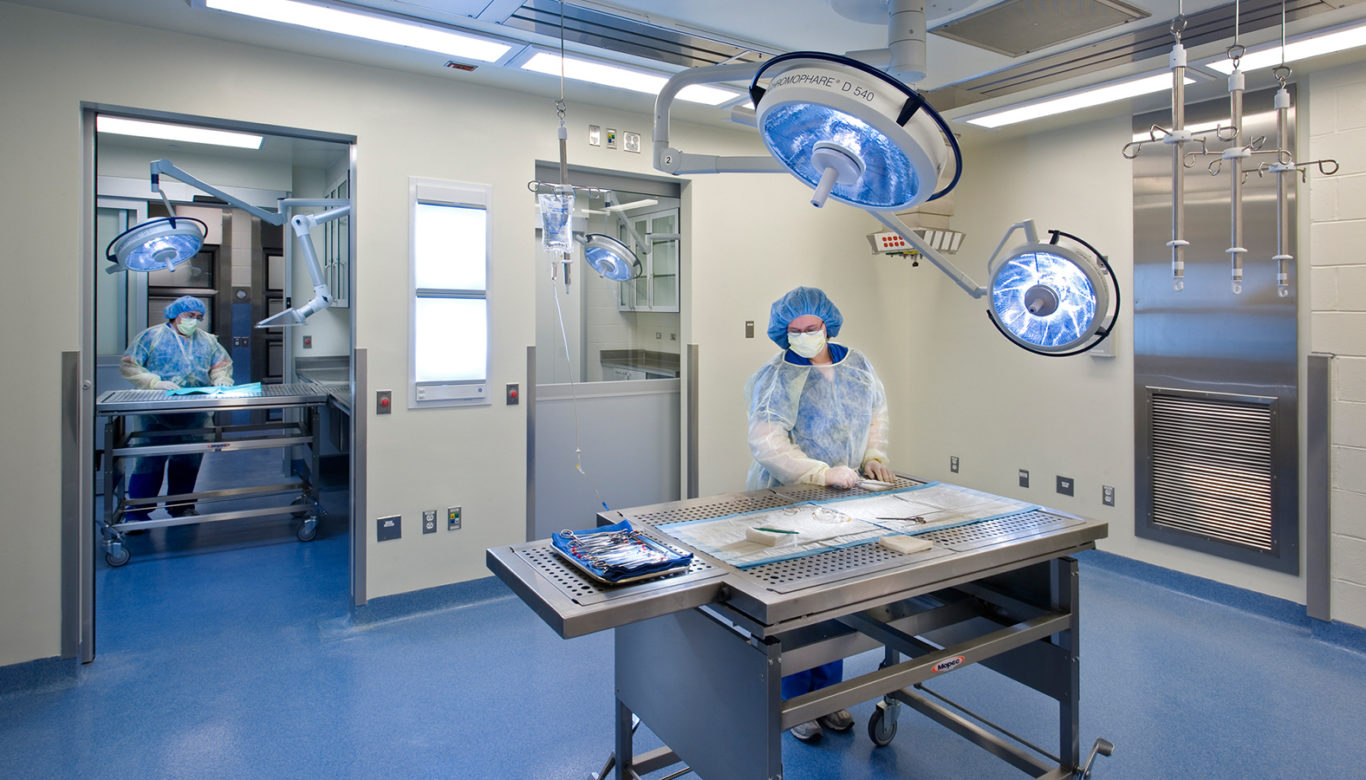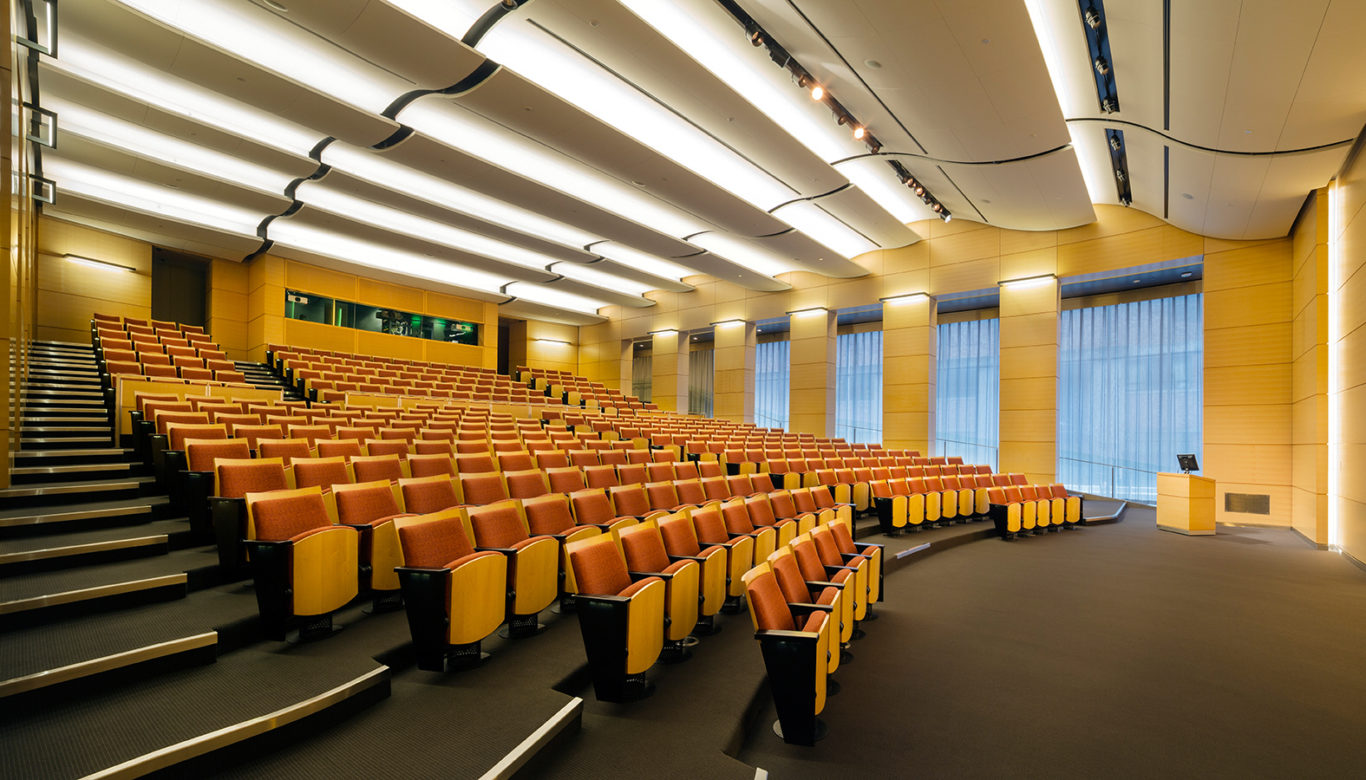The Mortimer B. Zuckerman Research Building provides an inspiring and efficient environment for cancer research, and a distinguished civic identity for Memorial Sloan-Kettering (MSK) Cancer Center. Located on a dense urban site, the building offers MSK’s researchers state-of-the-art laboratory spaces while responding to stringent urban design, zoning, and phasing constraints. At 420 feet tall, it also represents a new paradigm for urban laboratory buildings.
Restrained on both sides of the property by a Catholic church and an existing laboratory building, the new research tower incorporates a rectory at its base and cantilevers over the existing research building. While the careful placement of the program on the site creates a varied profile and presents four distinct faces to the surrounding context, the development of the exterior is the result of careful study of environmental factors.
Enclosing the laboratories are translucent and opaque scrims of glass with graduated densities of ceramic frit. The precise “tuning” of the pattern and density of layered frit glass controls daylighting. The office, conference, and interaction spaces aligned on the opposite side of the tower are enclosed in floor-to-ceiling transparent glass. While this extensive glazing offers expansive views of the East River, integrated exterior sun-control devices minimize glare and direct solar gain. Marking the threshold between the laboratory and office blocks is a continuous terra cotta wall that stretches the length and height of the building, connecting it to the masonry context of the hospital campus and the neighborhood.
